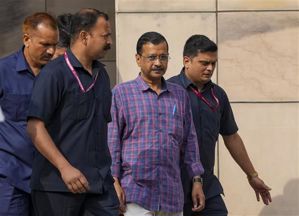
There has been a positive activity on the coal front.
Sushma Ramachandran
THE term black gold for coal is most apt in India where it is the most critical domestic energy resource. Even the Supreme Court accepted this reality while making a pronouncement on the coal block allocation case. It noted that it remains the most crucial fuel for power generation and many other industries. “Coal is the king and paramount lord of industry,” commented the Bench.
Though coal has always been vital for the country's fuel economy, it came into the limelight only in recent years after the coal block allocation scam. It was then that the value of this mineral came to be assessed as the Comptroller and Auditor General’s report spoke of a scam running into Rs 1.86 lakh crore. It seemed an unusually high valuation. But coal mines can clearly command such prices, as is evident by the auctions held by the NDA government earlier this year that led to an inflow of about Rs 2 lakh crore into the exchequer.
The fact is that about 80 per cent of power generation relies on coal while steel and other industries are also heavily dependent on the mineral. Domestic production has not been able to keep pace with demand, and imports have been rising rapidly over the last few years. Despite a production of 493 million tonnes in the last fiscal, India has had to import to meet the burgeoning demand. It has now become the world's third largest coal importer. This follows the slowdown in China's economy which led to a reduction in its consumption. The coal import bill was $16 billion in 2014-15 and could cross $20 billion in the current fiscal. The total quantum of imports may be well over 200 million tonnes in 2015-16 as against 180 million tonnes in 2014-15. Though commodity prices have been softening in world markets, coal imports are becoming costlier due to a slowly depreciating rupee.
The silver lining, however, is that coal output has risen sharply over the past year. Coal India's production rose by 32 million tonnes in 2014-15 over the previous year. This is higher than the cumulative increase of 31 million tonnes over the previous four years and the highest since 1975. The spurt is being viewed as a major turnaround in the coal industry. It has been partly attributed to 24 new mining projects going on stream as these contributed over half of the extra output last year. Environmental clearances have also been granted for a host of mining projects and pending land acquisition is reported to be going at a rapid pace, ensuring that output will rise further over the next five years.
The sudden activity on the coal front and the positive results can be attributed to several factors. First, the government recognised that the fallout of the coal scam could lead to work on mining projects coming to a grinding halt. It, therefore, decided to go ahead with the coal mine auctions which boosted revenues as well as confidence among states that clearing stalled projects would lead to higher resource mobilisation. Second, it was recognised that lack of easy coal availability had become one of the bottlenecks in speeding up growth. In fact, inventories had plunged to just two or three days stocks in some power plants. This has now been raised to at least 20 days stocks, or even higher in most plants. Third, the requisite political will has been given to drive higher coal output with Prime Minister Narendra Modi taking keen interest in the issue, especially in the light of his promise to bring electricity to every household in the country.
And fourth, the critical need of rail linkages has been recognised and the lack of coordination between railways and the coal ministry addressed to ensure that sufficient rakes are available to evacuate coal. The constant battle between the Coal and the Railways Ministries has been a staple headline of economic papers for decades. The allocation of rakes as well as new rail lines has never been based on national priorities but rather on ego clashes between bureaucrats and ministers of these two departments. One of the advantages of a highly centralised system of governance in the present regime is that the Prime Minister's Office can resolve such differences, and decisions are then accepted unquestioningly. Whether this is a viable policy for the long run, however, is a moot point.
At the same time, it would be premature to say that all is well in the coal sector. In spite of the higher output, coal imports are likely to continue rising over the next few years to meet the demand of a reviving economy. As growth is slowly getting back on track, the need for coal to fuel more thermal power generation will also be growing at the same pace. The target for production by Coal India in 2019-20 is a staggeringly ambitious one billion tonnes with another 500 million tonnes slated to come from the mines given to private companies through the auction route. It is always good to have ambitious targets but this looks tough to achieve, given the many challenges in the development of coal mining facilities. Even in the most positive scenario, coal imports will be required in increasing amounts for the next four years to meet the demand. In case, Coal India then reaches its target of one-billion-tonne output, one can expect a gradual tapering of imports.
In other words, India may soon have the dubious distinction of being the world’s largest coal importer, replacing China in the top slot. The country will thus have to shell out huge amounts of foreign exchange to pay for its energy imports, both coal and oil. Though commodity prices have softened significantly, there is no certainty on whether this trend will continue in the long term. The issue of the environmental impact of coal use also has to be considered. The focus needs to be on using clean technologies so that any ecological fallout is kept to the minimum. Among all the major fuels, it may not have an edge on environmental grounds. But coal remains the most critical one, at least for the time being, and the efforts to ensure easy availability in the medium and long term for all segments of industry needs to be continued in a sustained manner.



























